CG-Motion Macro, UDF, Reciprocating Motion CFD Simulation
$150.00 $75.00 Student Discount
- The problem numerically simulates the moving object using ANSYS Fluent software.
- We design the 3-D model with the Design Modeler software.
- We mesh the model with ANSYS Meshing software, and the element number equals 143,423.
- We performed the simulation in an unsteady (Transient) state.
- We use the Dynamic Mesh model to define the moving object.
- We use the User-Defined Function (UDF) to define a transitional reciprocating motion.
- We use the CG-MOTION Macro for UDF.
To Order Your Project or benefit from a CFD consultation, contact our experts via email (info@mr-cfd.com), online support tab, or WhatsApp at +44 7443 197273.
There are some Free Products to check our service quality.
If you want the training video in another language instead of English, ask it via info@mr-cfd.com after you buy the product.
Description
Description
In this project, we performed a numerical simulation using ANSYS Fluent software’s User-Defined Function (UDF). For this CFD product, we used CG-MOTION Macro to write UDF programming.
This product is the 6th chapter of the User-Defined Function (UDF) Training Course.
We considered a simple computational zone. Inside this zone, there is a moving cubic object. We assume that the movement is transitional and reciprocating. This means that the moving object moves forward in a straight path and then returns to this path backward. So, we need to define a function that describes the horizontal movement in reciprocating mode.
First, we modeled the geometry in 3D with Design Modeler software. Then, we meshed the model with ANSYS Meshing software. Meshing is unstructured, and 143,423 cells are created. Finally, we numerically simulated the current model based on the CFD method by ANSYS Fluent software.
Methodology (UDF)
In this project, we want an object to move within a domain. When an object inside the domain moves, the model mesh is deformed. Therefore, we use the Dynamic Mesh model.
We define the moving object as a Rigid Body in dynamic zones. When we use a rigid object, we need to define a motion (translational or rotational) for it. So, we define a User-Defined Function (UDF) to apply a translational movement to the object. We need to use the CG-Motion Macro (DEFINE_CG_MOTION macro) for this UDF.
In this UDF, we define the function according to the velocity value. Our body has one degree of freedom in movement. So, we set the rotational velocity equal to zero in all three directions and consider the value of the translational velocity equal to zero in two directions. We define the function of the velocity value in the x-axis direction as follows.
Conclusion (UDF)
After completing the calculation, we will review the results. Since the dynamic mesh model is time-dependent, the simulation is performed with an unsteady (Transient) solver. So, we obtain the image of the model geometry at different simulation times. The images show that the object moves straight over time and returns to the same path again.We conclude that we performed the current numerical simulation correctly, and our UDF worked correctly.
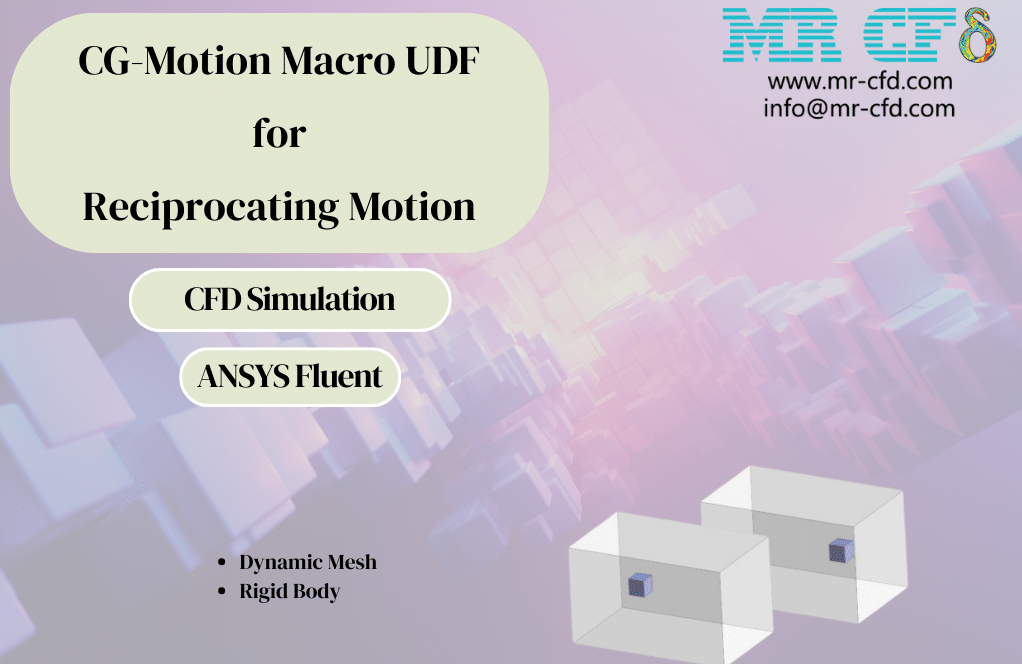
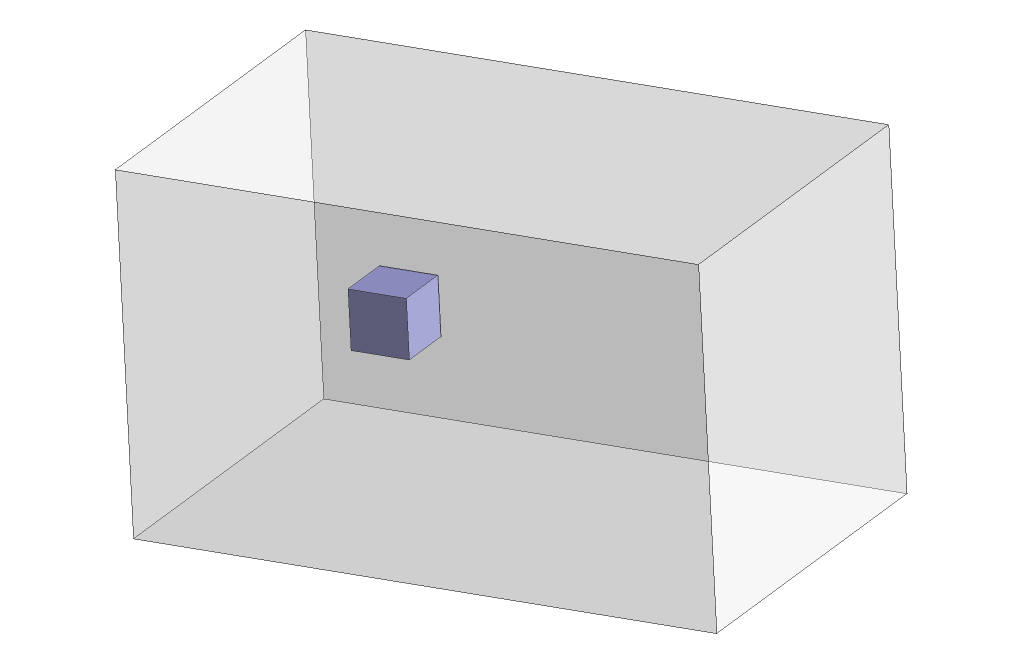
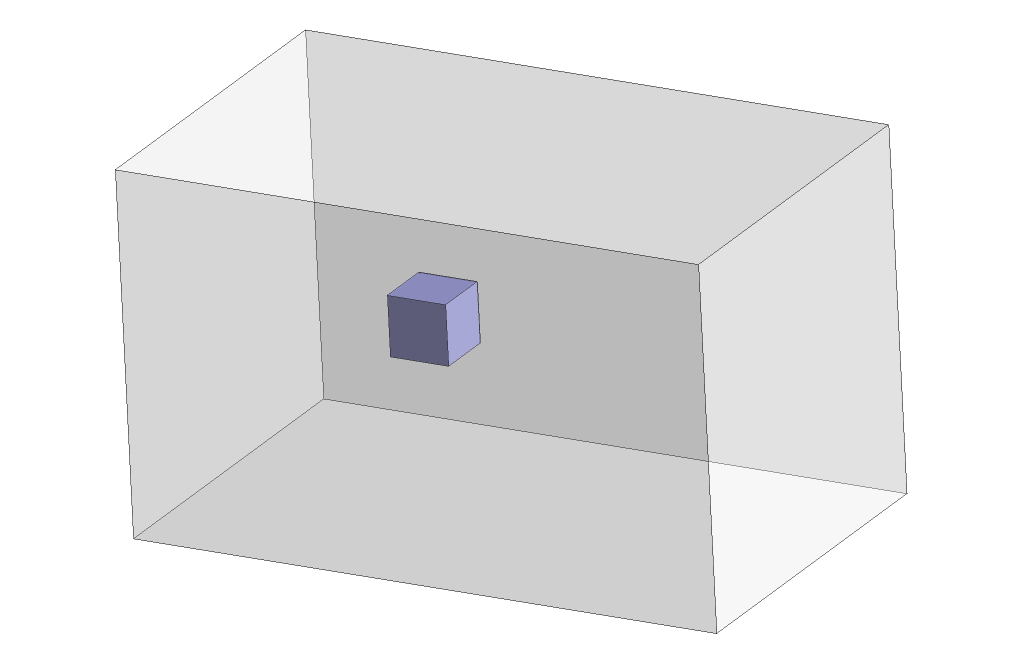
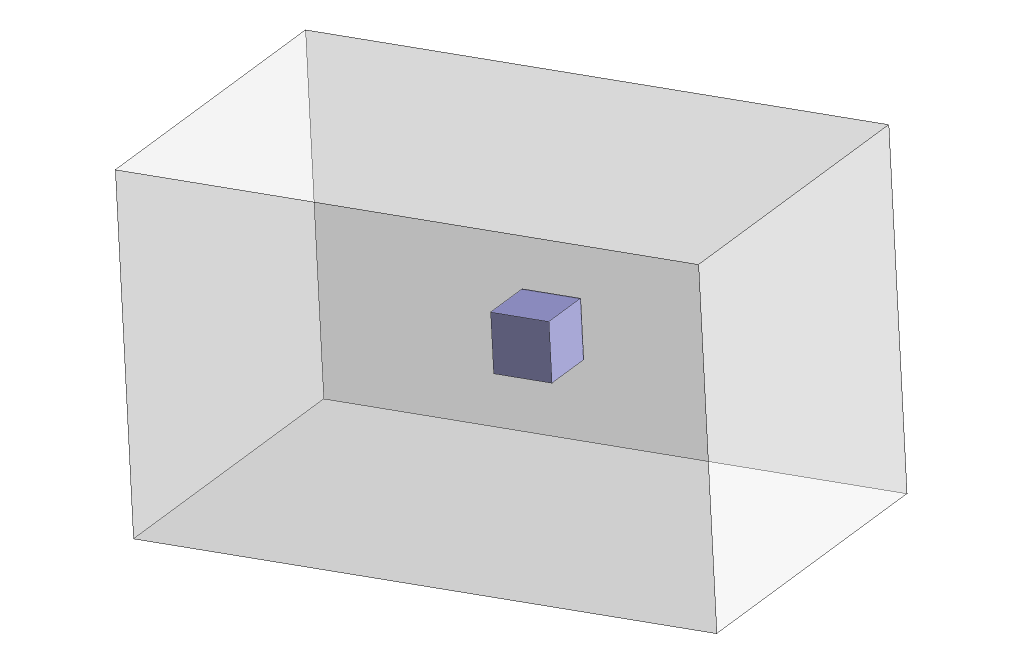
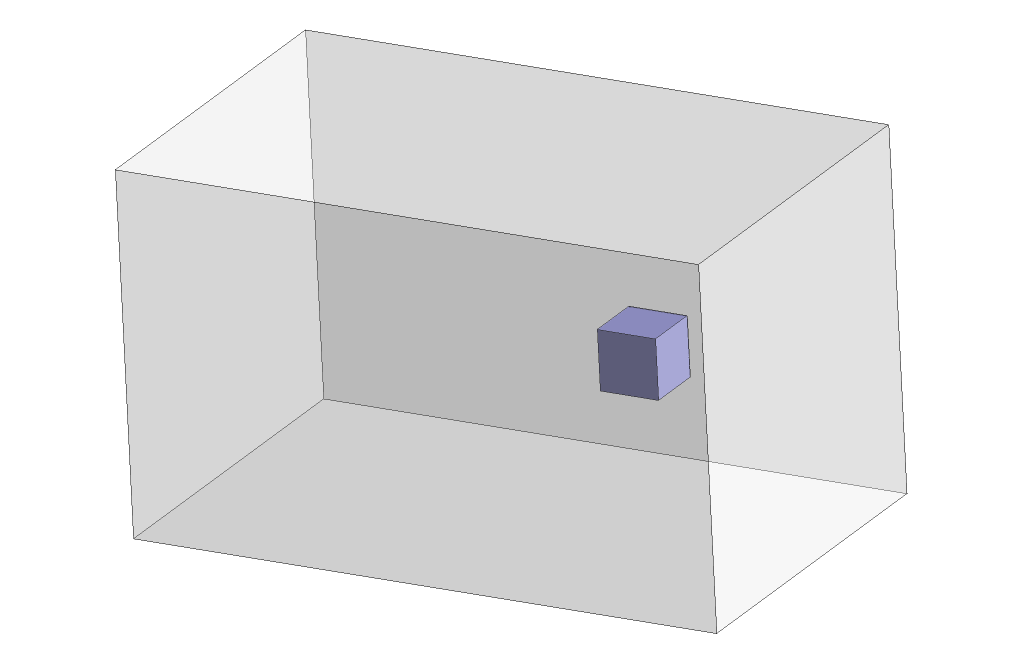
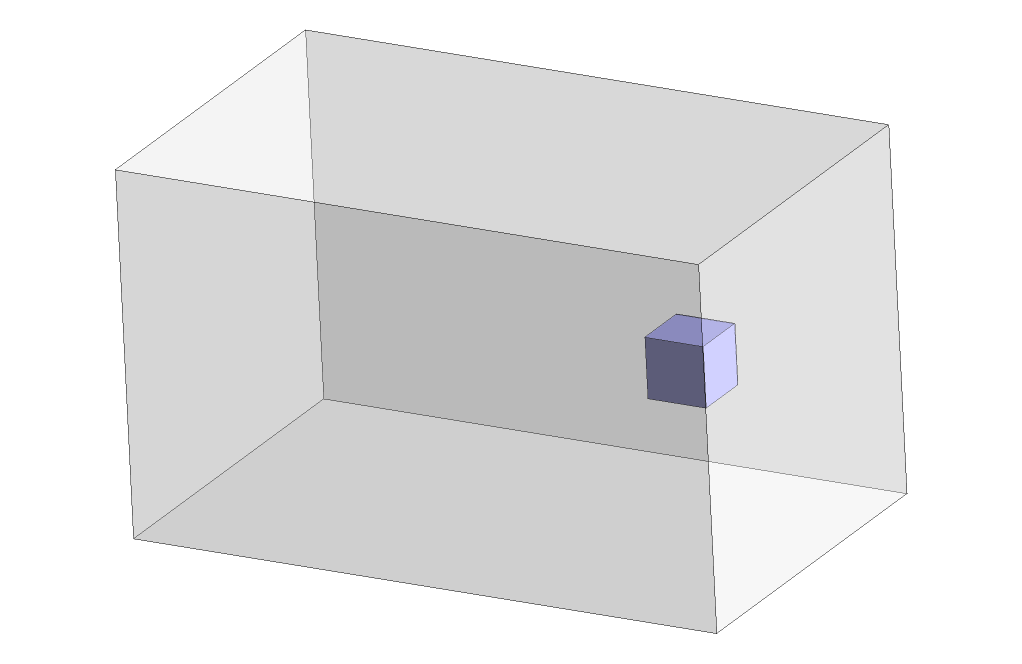
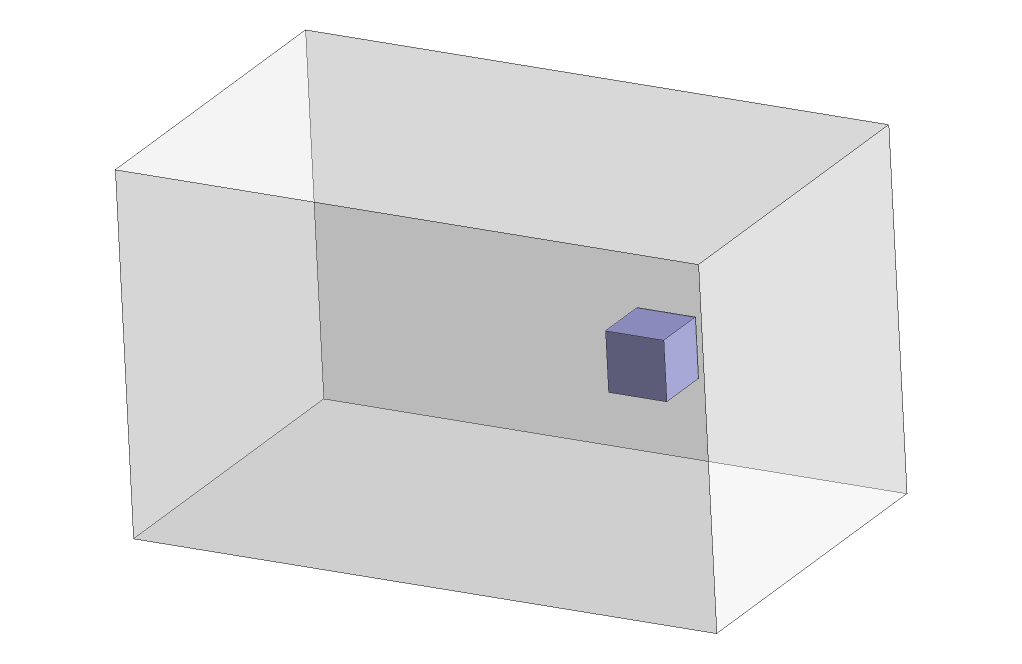
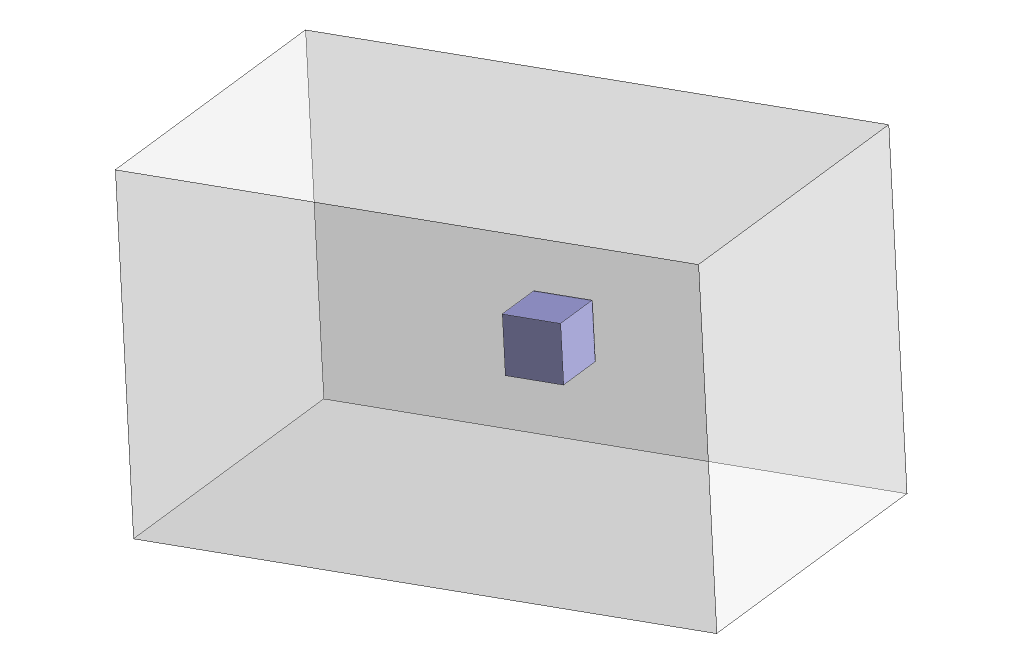
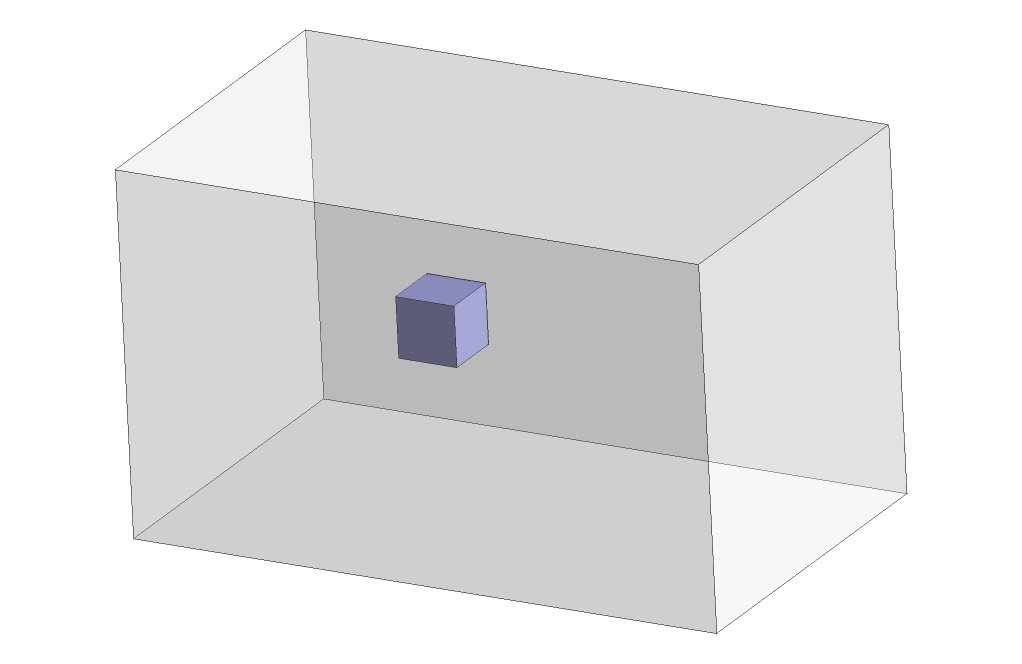
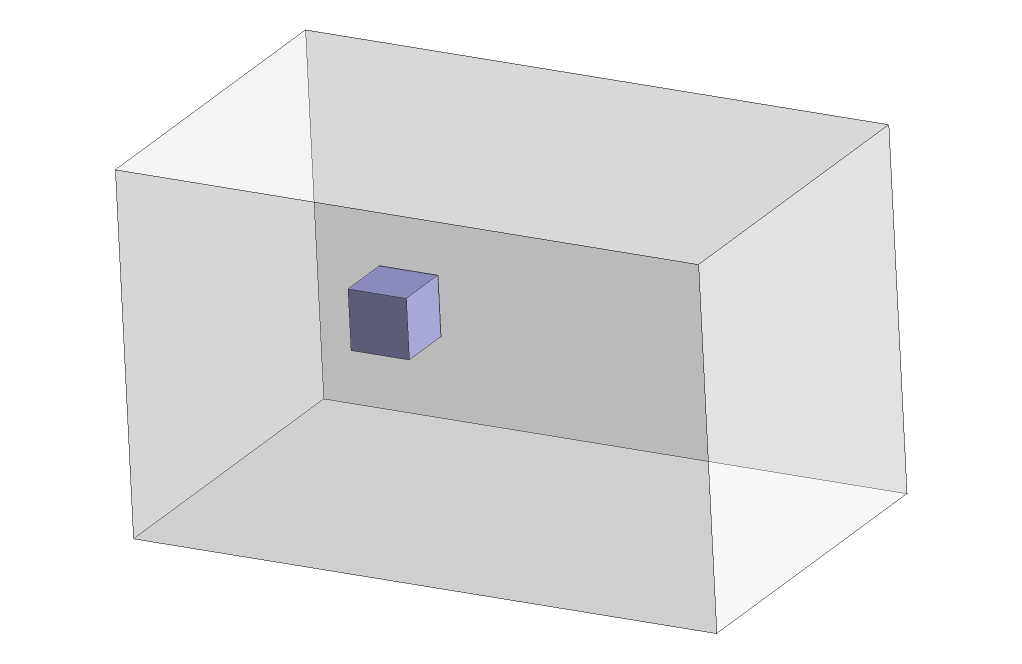
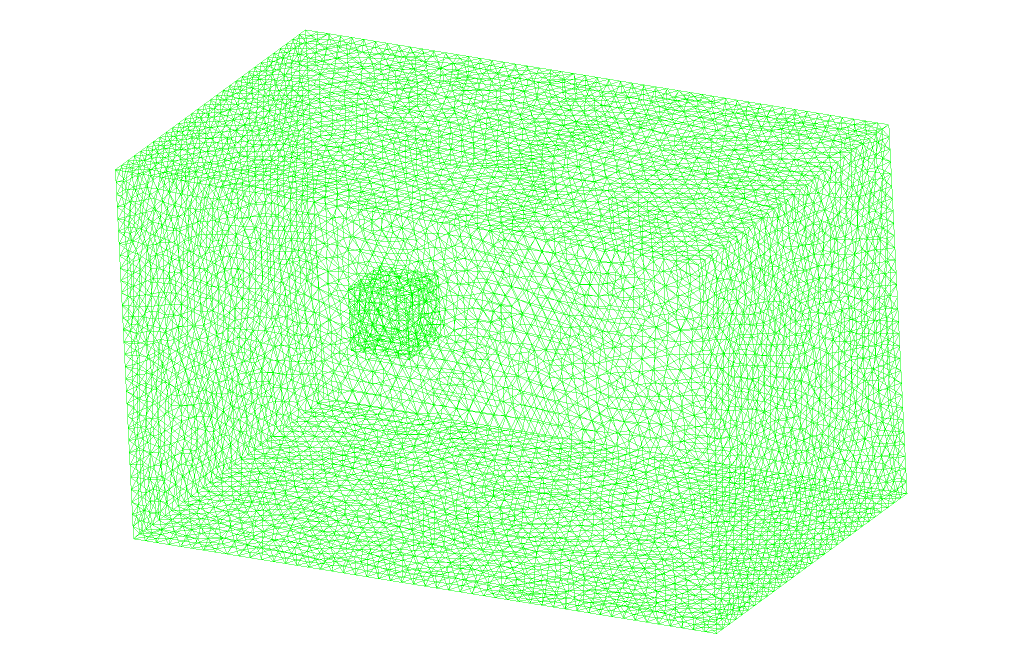

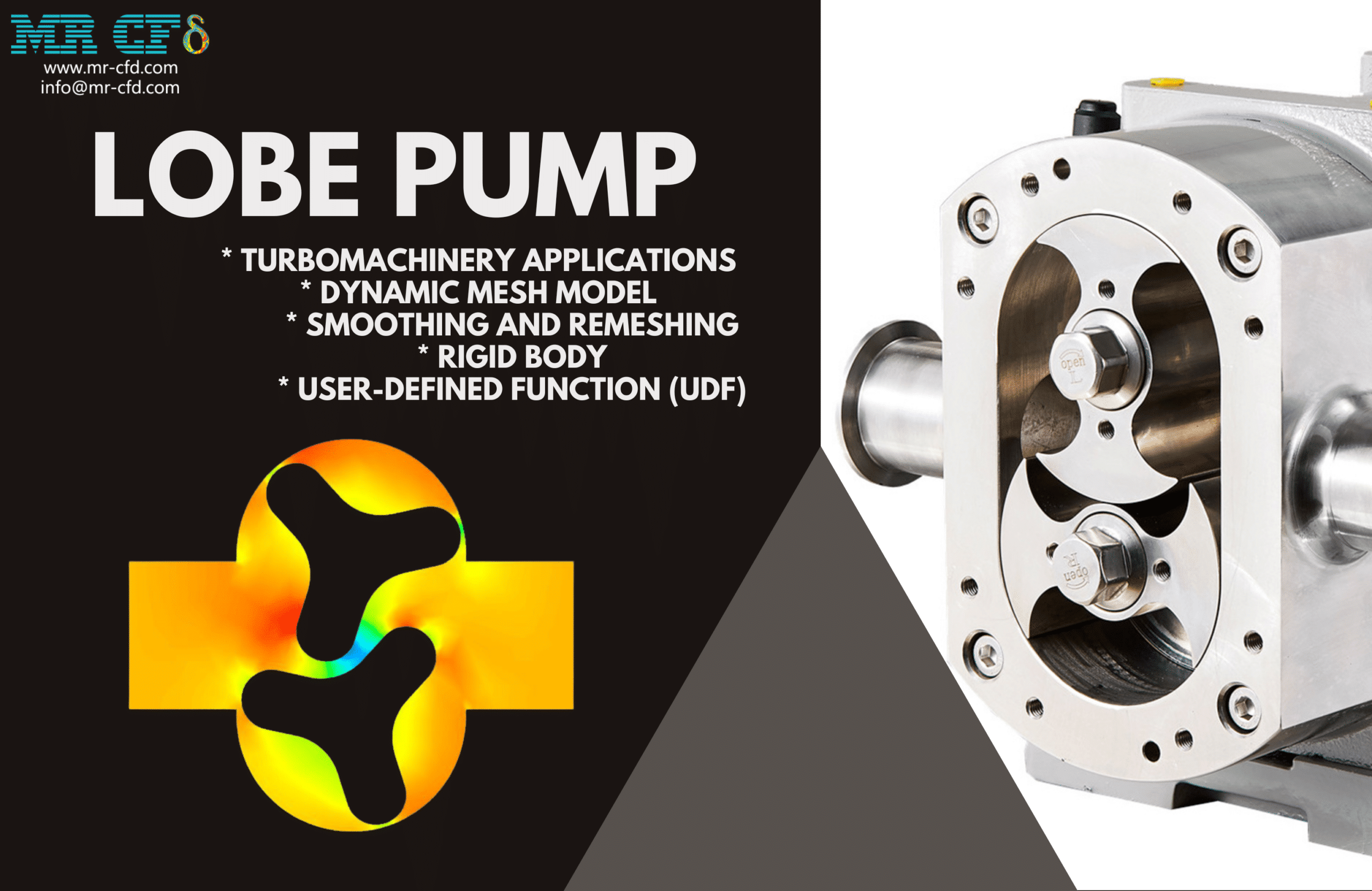

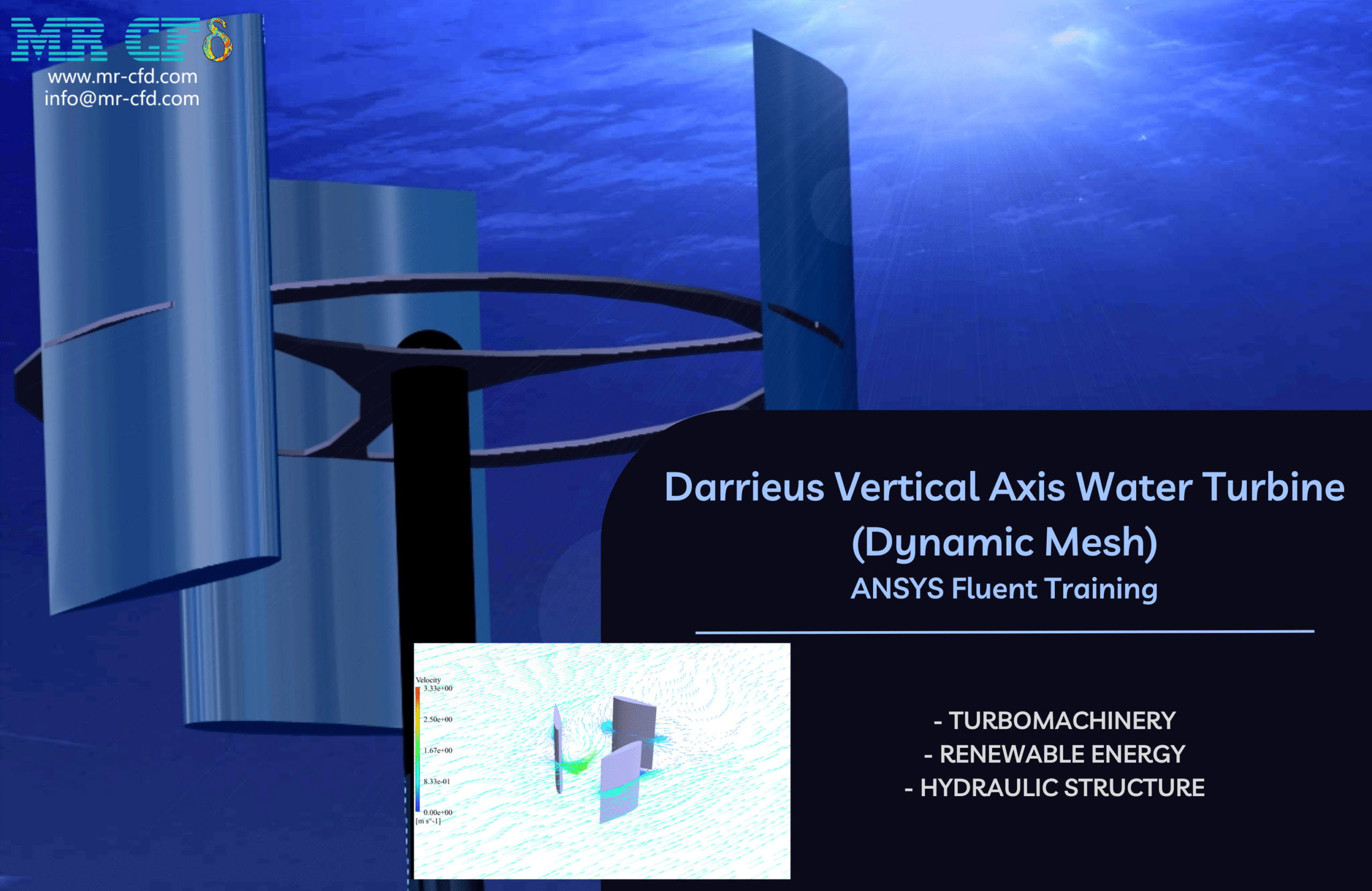
Roslyn Wuckert –
This learning product about reciprocating motion using UDF sounds complex. Does the training cover how to write and compile UDFs for other types of motions as well?
MR CFD Support –
Yes, the training course provides comprehensive instructions not only on the reciprocating motion UDF but also covers how to write and compile User-Defined Functions for various types of motions. It is designed to equip participants with the knowledge and skills to customize and control the motion of objects within their simulations.
Prof. Brenna Kulas IV –
I’m impressed with the way the UDF has been implemented to handle complex reciprocating motion in a dynamic mesh setup. Great job on explaining the methodology clearly. It is evident that a high level of expertise is required to write these kinds of functions and apply them effectively.
MR CFD Support –
Thank you for your kind words! We are delighted to hear that the explanation of the UDF implementation and the modeling of reciprocating motion was clear and informative. Our aim is to offer comprehensive materials that empower learning and development in CFD simulations. It’s wonderful to know that we are achieving that. If you have any more questions or need further assistance, don’t hesitate to ask.
Ruthe Kassulke –
The UDF to control the reciprocating motion must require precise coding. How are experts able to customize it according to varying simulation needs?
MR CFD Support –
Experts use their deep understanding of both the physics involved in the simulation and the programming tools provided by the CG-MOTION Macro in ANSYS Fluent. They write and customize the UDF by carefully defining motion functions, paying attention to parameters such as velocity, time, and degrees of freedom, to ensure the coded behavior closely follows the required reciprocating motion pattern.
Christiana Okuneva DVM –
This training course was so detailed in explaining UDF coding for reciprocating motion in ANSYS Fluent. I especially appreciated the example of the moving cubic object. However, could you clarify if the reciprocating translation speed of the object changes over time or remains constant?
MR CFD Support –
In the CG-Motion Macro for reciprocating motion, the translation speed of the object typically varies over time as described by the UDF. The function will define the movement speed to simulate the forward and backward path of reciprocation, accounting for changes in speed such as acceleration and deceleration. In this case, the motion is not at a constant speed but follows a defined pattern that is typically sinusoidal or analogous to reciprocating motion observed in machinery.
Mrs. Lottie West –
The UDF used in this simulation created a reciprocating motion in only one direction. Is it possible to adapt this UDF to create a 3D path for the moving object?
MR CFD Support –
The UDF as described solves for reciprocating motion along one axis using the CG-MOTION Macro. However, with adjustments to the programming, it is possible to create a User-Defined Function that allows the object to move along a predefined 3D path by specifying translational velocities in all three axes and managing how they change over time, depending on the desired trajectory.
Elaina Friesen PhD –
I’m fascinated by the use of CG-MOTION Macro for specifying reciprocating motion in Fluent. Could you please clarify how accurate this UDF is in simulating real-world reciprocating motions, and were there any limitations observed during the simulation?
MR CFD Support –
The CG-MOTION Macro along with a well-defined UDF in ANSYS Fluent can be very accurate in simulating reciprocating motions, mirroring real-world behaviors when programmed correctly. It calculates the object’s movement in each time step, ensuring a realistic recreation of the motion. During the simulation, limitations can arise from factors like mesh quality and computational power—especially within zones where mesh deformation occurs. Nonetheless, with careful planning and model setup, these limitations can be managed effectively with the dynamic mesh method and UDF approach.
Josie Shanahan –
The course on UDF really helped me grasp the concept of programming custom functions in ANSYS Fluent. Your CG-Motion Macro example made understanding reciprocating motion clear and accessible. The structured steps and feel like I can now tackle my own simulation scenarios with greater confidence.
MR CFD Support –
Thank you for your great feedback! We are thrilled to hear that you found the UDF training course and the CG-Motion Macro example to be helpful and informative. It’s great to know that it has boosted your confidence in tackling simulation scenarios. We appreciate the time you took to write this review and wish you the best in your future simulations.
Charlotte McGlynn –
The UDF worked exactly as I had hoped! Is it possible to customize the UDF to vary the reciprocating speeds at different times during the simulation?
MR CFD Support –
Absolutely! User-Defined Functions within ANSYS Fluent are fully customizable and programmable. You can adjust the code to include conditions that change the reciprocating speed at different times or based on different simulation parameters. If you need guidance on how to modify your UDF, our team is here to help!
Selena Kshlerin –
I love how the UDF lets the cube move back and forth! It’s super cool to visualize!
MR CFD Support –
Thank you for your kind words! We’re thrilled to hear that you enjoyed visualizing the reciprocating motion through our CG-Motion Macro UDF tutorial. It’s great to know that the training met your expectations and provided a clear illustration of the concept.
Mrs. Kaci Smitham Sr. –
The UDF applied perfectly allowed the object to have realistically reciprocating motion. The supporting images at different times clearly display the precise behavior of the moving object. Excellent way to observe the dynamic interactions in a CFD environment.
MR CFD Support –
Thank you for your positive feedback! We are delighted to hear that our UDF Course chapter on reciprocating motion met your expectations and you appreciated the dynamic mesh feature in action. It’s great to know our simulations can visually demonstrate the concepts we aim to teach. Thank you for choosing our course, and we hope you continue to find our learning materials valuable.
Mr. Rashad Fritsch –
The CG-MOTION Macro for UDF sounds fascinating. Could you explain how to ensure that the UDF responds accurately during the simulation, especially when reversing the motion in the reciprocating path?
MR CFD Support –
To ensure that the UDF responds accurately during the simulation, we carefully program the UDF to account for the reciprocating motion. A predefined pattern or mathematical function defining the transitional speed at different time steps is used. As it hits specified points or after certain intervals, the velocity in the UDF is modified to reverse the direction of motion smoothly, effectively emulating the reciprocating mechanism. Constant monitoring and adjustments based on simulation feedback are equally crucial to achieving precise behavior.
Melvin Casper –
I appreciated the clarity of the explanation for the reciprocating motion setup via the UDF using the CG-MOTION Macro in Fluent. It’s incredibly interesting to see how the dynamic mesh model was applied to this simulation. Are there any considerations to be aware of when setting the time step for the transient solver to ensure accurate capture of the reciprocating motion?
MR CFD Support –
When setting up the time step for the transient solver in dynamic mesh simulations, it’s crucial to ensure that the time step is small enough to capture the dynamic behavior accurately. A very large time step might result in a loss of detail in the motion and inaccurate simulation results. Conversely, a very small time step can lead to excessive computational time. Balancing between accurate motion capture and reasonable computational cost is key. In this specific UDF simulation, you would ideally select a time step based on the expected velocity of the reciprocating motion and the object’s size to assure the mesh can conform to the object’s movement without inducing errors.
Mrs. Felipa Schuster –
The UDF setup seems quite complex with reciprocating motion involved. Is there a pre-defined function for reciprocating movements or do users have to write a custom UDF for every simulation involving such motion?
MR CFD Support –
In ANSYS Fluent, there is no pre-defined function specifically for reciprocating motions. Users typically have to write a custom UDF using the DEFINE_CG_MOTION macro to define the motion accurately based on their specific requirements of the simulation scenario.
Brayan Murray Sr. –
I really enjoyed the clear explanation of reciprocating motion simulation with UDF. Without getting too technical, could you please elaborate on how the software captures the precise motion of the object back and forth?
MR CFD Support –
In response to your question on reciprocating motion, the software accurately captures the object’s movement using the dynamic mesh feature, which updates the mesh in response to motion. Additionally, the User-Defined Function (UDF) precisely defines the movement pattern of the cubic body. This UDF applies translational velocity at different time intervals, ensuring the object reciprocates along its path with defined speed and timing, which gives a highly accurate representation of the motion within the computational domain.
Demarco Buckridge –
The course sounds comprehensive. I especially appreciated that the UDF allows for modeling reciprocating motion, which can be quite complex. I’m also assuming that useful parameters, like oscillation frequency and stroke length, can be customized within the UDF, correct?
MR CFD Support –
Yes, absolutely! Within the UDF you can customize a wide range of parameters including oscillation frequency, stroke length, and translational velocity to accurately represent reciprocating motion as per the requirements of your specific simulation project.
Assunta Schmitt –
The product sound very helpful! The way client can learn to write custom UDF for simulating reciprocating motion is impressive. The mesh detail and the unsteady solution adaptation also seem spot on.
MR CFD Support –
Thank you for the positive feedback! We are thrilled to hear that you appreciate the detail in the custom UDF creation and simulation setup. If you ever need to customize or extend your simulations further, remember that our UDF training can empower you to do so. We’re here to support you in your CFD journey!
Eleazar Harris –
The CG-MOTION UDF programming seems complex. Did you find it challenging to understand and apply this macro to achieve the reciprocating motion of the cubic object in Fluent?
MR CFD Support –
Indeed, the power of UDF in ANSYS Fluent allows for the customization of complex motions. However, the CG-MOTION Macro in particular is designed to facilitate the implementation of such motions. Although it appears complex, with the User-Defined Function (UDF) Training Course’s clear guidelines, I found it manageable to understand the macro and successfully apply it to simulate reciprocal motion in my project.
Mabelle DuBuque –
What exactly is a CG-MOTION Macro, and can it handle complex shapes moving in diverse directions?
MR CFD Support –
CG-MOTION Macro is a feature within the User-Defined Functions (UDF) framework in ANSYS Fluent that allows users to define the motion of center of gravity for a rigid body in the computational domain. It can be used to prescribe translational and rotational motion based on user-provided expressions or functions. While it is primarily designed to handle the motion of rigid bodies, it can accommodate complex shapes moving in different paths, including curvilinear or multi-directional movements, as long as they comply with the definition of rigid body motion and the motion can be accurately described by the functions written within the UDF.
Prof. Jett Farrell –
The UDF project for reciprocal motion sounds fascinating! Which factors determine the speeds that the cubic object reaches during its movement within the computational zone?
MR CFD Support –
The speeds of the cubic object during reciprocal movement within the computational zone are primarily determined by the function defined in the User-Defined Function (UDF) you programmed. The velocity value function specifies the translational velocity in the x-axis direction and takes into account the time-dependent behavior of the dynamic mesh to simulate reciprocal motion accurately.
Jolie West –
I followed your reciprocating motion simulation and the methodology was perfect. The oscillatory movements were depicted accurately and played a significant role in aiding my understanding of dynamic mesh application in Fluent. Well done on creating such a detailed tutorial!
MR CFD Support –
Thank you so much for your kind words! We’re thrilled to hear that our reciprocating motion simulation and User-Defined Function training course were able to assist in expanding your understanding of dynamic mesh applications in ANSYS Fluent. Our team puts a lot of effort into creating thorough and practical tutorials, and your positive feedback is truly appreciated!
Catherine Howe III –
The CG-Motion Macro and Dynamic Mesh seem like complex topics. Does the course also provide exercises or assignments to solidify our understanding after we learn about the concepts?
MR CFD Support –
Yes, our User-Defined Function (UDF) Training Course not only covers complex topics such as CG-Motion Macro and Dynamic Mesh but also includes practical exercises and assignments. These are provided to aid in your understanding and application of the topics to ensure you are able to perform simulations and use UDF effectively on your own.
Sim King –
The CG-Motion UDF tutorial was top-notch. The examples were clear and well explained. Now I feel confident in setting up a simulation with reciprocating motion. Great job!
MR CFD Support –
We are thrilled to hear that the CG-Motion UDF tutorial has boosted your confidence in simulation setup! Thank you for taking the time to share your positive experience. Keep on simulating!
Mrs. Janis Kutch –
The training for CG-Motion Macro and UDF is fantastic! The concept of reciprocating motion was clearly explained and conveyed beautifully through the simulations.
MR CFD Support –
Thank you for your positive feedback! We’re glad to hear that the training for the CG-Motion Macro and User-Defined Function (UDF) was clear and helpful to you. Should you have any further questions or need more resources, feel free to reach out to us.
Mr. Robb Weber III –
The UDF reminds me of programming in college – tricky! Where can I learn more about writing macros like DEFINE_CG_MOTION for ANSYS Fluent?
MR CFD Support –
I’m glad to hear the project piqued your interest in UDF programming! You can learn about writing UDF macros, including DEFINE_CG_MOTION, through various resources offered by MR CFD Company. They offer a User-Defined Function (UDF) Training Course, which could be precisely what you’re looking for. The course covers the basics to more advanced topics in UDF programming within ANSYS Fluent. Additionally, many online learning platforms and the ANSYS user guide provide extensive information on UDF programming. If you’re keen to dive deeper, you might consider the comprehensive training course mentioned.
Priscilla Medhurst –
The UDF here seems critical for representing the reciprocating motion of the object. Can you give a hint on how to write such UDFs for different motion profiles?
MR CFD Support –
Indeed, constructing a UDF to represent various motion profiles requires understanding both the physical motion you want to simulate and how to translate that into C code that ANSYS Fluent can understand by using its UDF system. You need to use specific macros such as DEFINE_CG_MOTION to define the motion, set up the appropriate degrees of freedom for your object, and calculate translation or rotation velocities over time within the UDF. It’s also important to test your UDF in Fluent to ensure it correctly mimics the desired motion profile.
Mrs. Concepcion Little –
I’m interested in the specific way the UDF handles the reciprocating motion. Could you provide a simple explanation?
MR CFD Support –
Absolutely! The UDF (User-Defined Function) defines the cubic object’s horizontal motion using a reciprocating function. This function calculates the position of the object over time, coordinating its forward and backward motions in the computational domain.
Darrell Mayert IV –
I think the reciprocating motion part is especially fascinating! My question is, how is the reversibility of the reciprocating motion achieved within the UDF in ANSYS Fluent? It seems quite complex to simulate backward and forward movement accurately.
MR CFD Support –
To achieve the reversibility of the reciprocating motion in the UDF, a function is programmed that describes the object’s velocity over time and can change direction after reaching specific limits or upon the passage of a defined amount of time. Essentially, the function dictates the cubic object’s speed and direction along the x-axis, and when it needs to reverse, the velocity direction is changed, which is reflected in the dynamic mesh to show the object moving backward along its path.
Reese Gulgowski Sr. –
Are the simulations here considering only translational motion, or does it handle rotational movement of the object as well?
MR CFD Support –
In this specific simulation, the design only required translational motion. The CG-Motion Macro UDF is written to describe horizontal reciprocating motion along a straight path, and there was no need for rotational movement for this model. Therefore, head loss in the three rotational directions is set to zero, and focus is solely on translational velocity in the x-axis direction.
Mrs. Liza Beer –
The content is very informative and seems comprehensive. However, I’m curious if there was any experimentation or verification involved to confirm the accuracy of the UDF as part of the learning material?
MR CFD Support –
As an admin for MR CFD, I can confirm that all of our training materials, including the User-Defined Function (UDF) courses, have gone through rigorous validation processes. Our team cross-checks the numerical simulation results with analytical solutions or experimental data whenever possible to ensure the UDF performs correctly and accurately reflects the expected physical behavior.
Prof. Brooke Prohaska –
The UDF reciprocating motion simulation is impressive. The blend of the methodology, dynamic meshing, and the clear depiction of the translational motion shows a comprehensive educational approach for understanding object movement in CFD analysis.
MR CFD Support –
Thank you for your kind words! We’re pleased to hear that you found the methodology clear and the simulation effective for understanding the principles of reciprocating motion in CFD. We always strive to provide comprehensive educational materials, and your feedback is greatly appreciated!
Alek Spencer –
I just wanted to say that the CG-Motion Macro and UDF for reciprocating motion provided in Chapter 6 was a game changer for my project. The level of detail and clarity made the implementation seamless. Thank you!
MR CFD Support –
We are thrilled to hear that our CG-Motion Macro and UDF from the User-Defined Function training course were helpful for your project. We appreciate your feedback and are glad to know the material was clear and beneficial. Thank you for your support!
Yoshiko Brakus –
Very pleased with how the UDF function was implemented to create translational and reciprocating motion of the object. The explanation was clear and the results matched the anticipated behavior perfectly. Excellent training course chapter on using a CG-MOTION Macro!
MR CFD Support –
Thank you for your positive feedback! We are thrilled to hear that our training on CG-MOTION Macro and UDF implementation for reciprocating motion in ANSYS Fluent was clear and effective. Your satisfaction with the results is our top priority. Stay tuned for more high-quality CFD training materials.
Modesta Cole IV –
Very impressed with the reciprocating motion simulation! Does the UDF you developed allow for easy adjustments in the amplitude or frequency of the reciprocating motion?
MR CFD Support –
Thank you for your comments! Yes, the UDF is designed to be flexible, allowing for convenient modifications of parameters such as amplitude and frequency of the reciprocating motion to suit different simulation needs.
Dr. Guillermo Kozey –
I am very intrigued by the use of the CG-Motion Macro for reciprocating motion in ANSYS Fluent. Could someone elaborate on how the motion of the object is synchronized with the fluid flow within the simulation?
MR CFD Support –
To synchronize the motion of the object with the fluid flow, the User-Defined Function (UDF) with the CG-Motion Macro is created to define the specific motion pattern. This is linked to the dynamic meshing process, allowing the mesh to update as the object moves, ensuring that the fluid flow interacts realistically with the moving object throughout the simulation. The solver then calculates the fluid flow considering both the reciprocal movement defined in the UDF and the dynamic adjustments made to the mesh, resulting in a coupled interaction between the mesh movement and fluid flow.
Kade Emmerich –
This UDF project seems very intriguing! I’d like to know how accurate this simulation would be in real-life engineering applications, and what are the limitations of using UDFs like the CG-Motion Macro in complex situations?
MR CFD Support –
The accuracy of the simulation in real-life engineering applications can be high if the UDF is written correctly and all physical conditions and parameters are considered within the model. However, limitations vary depending on the complexity of the application. UDFs like the CG-Motion Macro may face challenges when dealing with highly complex geometries, multiphase flows, or non-linear material behavior. It is important to validate the simulation results with experimental or theoretical data to ensure reliability. As for complex situations, the limitations are often related to the computational power required and the proficiency of the user in expressing complex boundary and initial conditions through programming.
Darwin Lehner –
I am excited about the CG-Motion Macro in the UDF. Does this make the simulation process easier for simulating moving objects compared to using standard Fluent options? How significant is the improvement in efficiency, if any?
MR CFD Support –
Yes, using the CG-Motion Macro in UDF allows for more precise control over the motion of objects within the simulation domain compared to standard options in Fluent. It enables custom definition of movements which might not be pre-programmed in Fluent. While it might not necessarily improve computational efficiency, it significantly enhances functionality, allowing for more complex simulations of moving objects, which ultimately can result in more accurate and successful simulations.